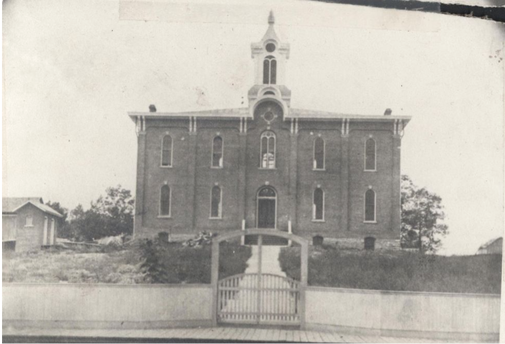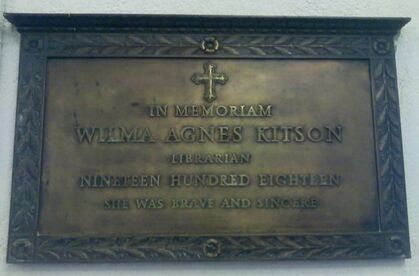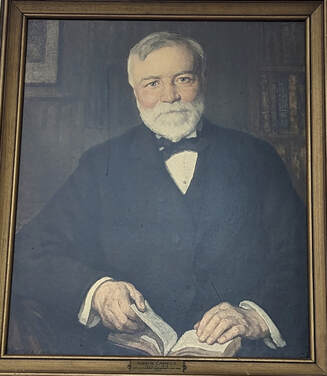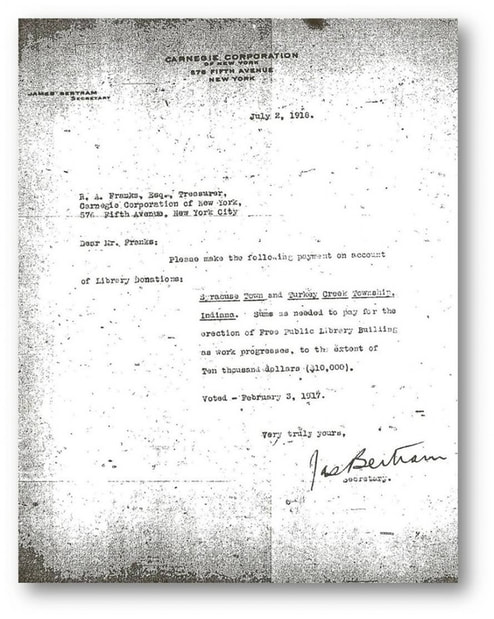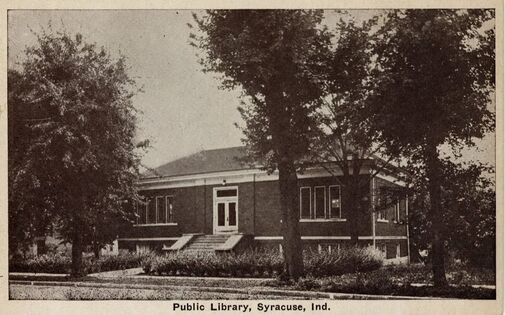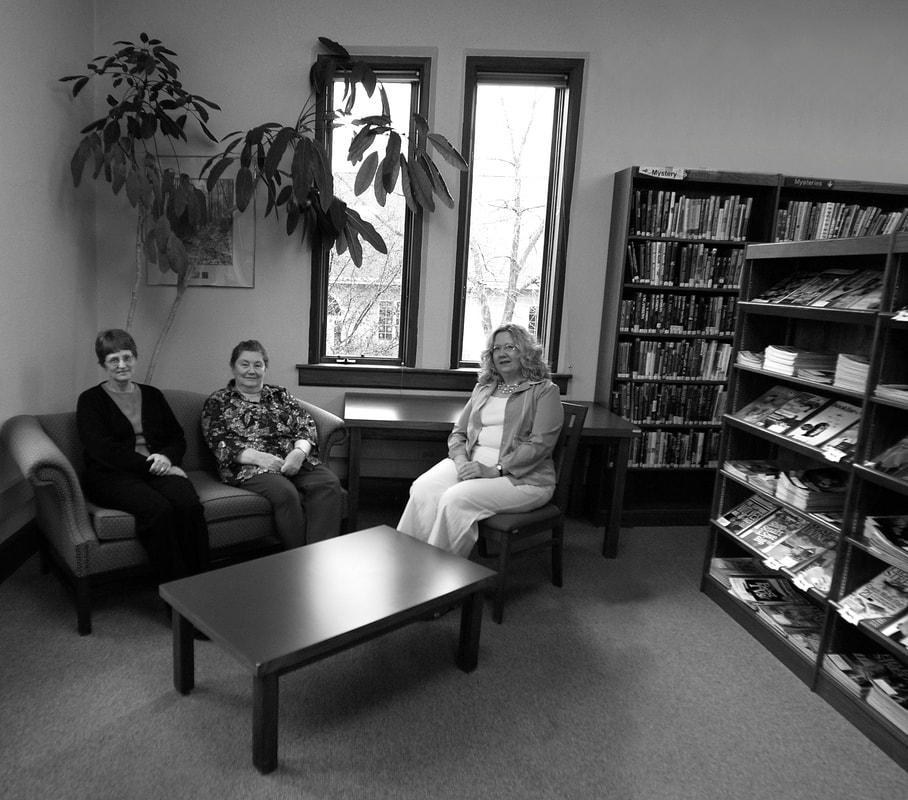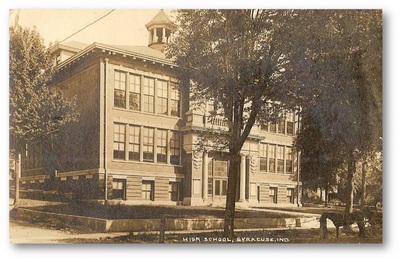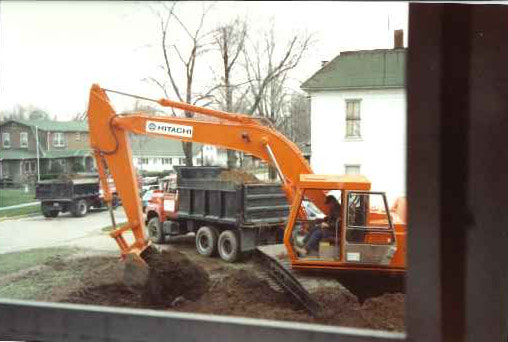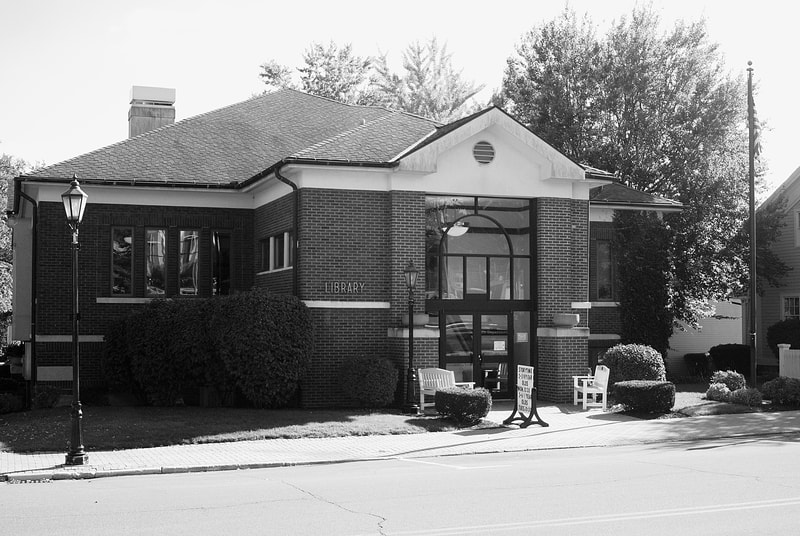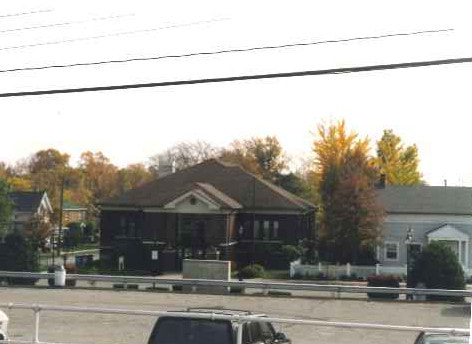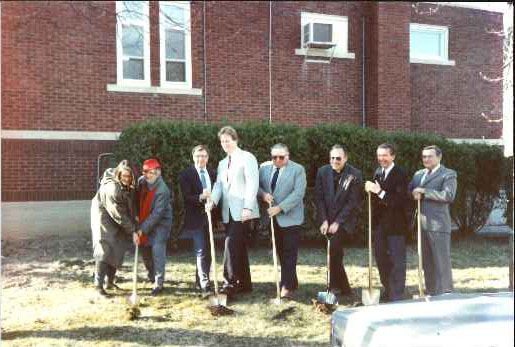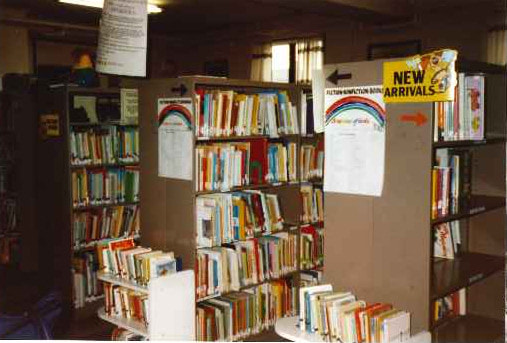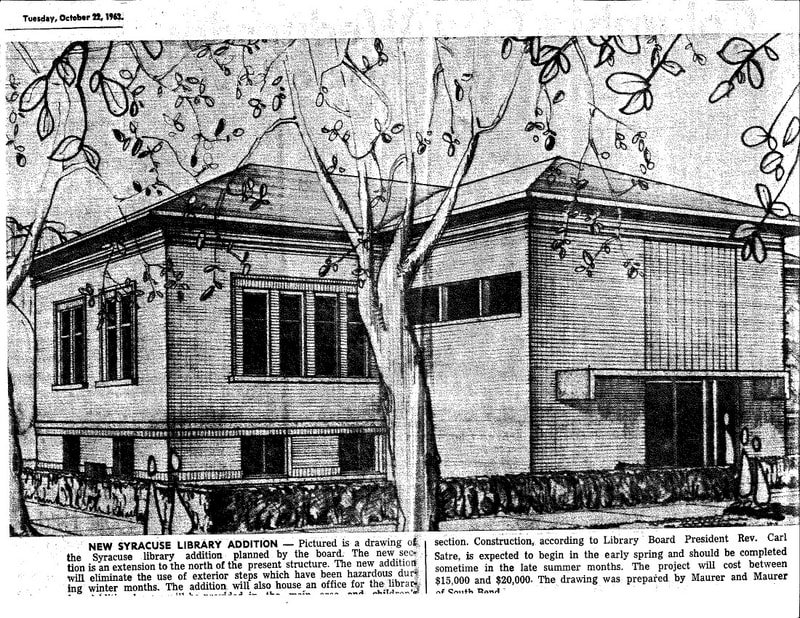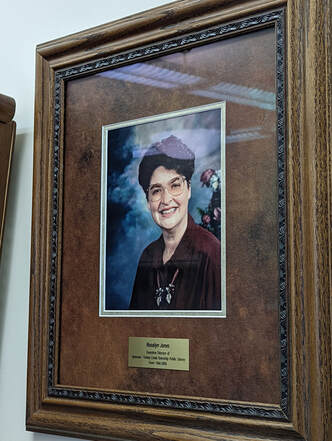The Beginnings
|
The first evidence of any sort of a library in Syracuse, Ind., comes from the minutes of a town meeting in 1886. It seems there was a circulating library in effect with about 40 subscribers. It was in 1908 that a local judge, Lemuel Royse, was petitioned to form a library board. The new library board had their first meeting on Oct. 24, 1908, and the library was organized in the basement of Syracuse School, formerly across the street from the present library.
On Nov. 2, the board hired Ida Knorr as the librarian. The library was a single room in the basement, and was open fifteen hours a week. Most of the books in the collection were gifts or donations. The original library opened on February 12th, 1909. Ida Knorr was the librarian from 1908 until about 1916, when Kitson took over for her. In the minutes of a board meeting from September 29th of that year, it’s recorded that Ida Knorr was taking an “indefinite vacation” and thus Kitson was hired as the librarian for one year. Unfortunately, Kitson passed away in April 1918. So Ida Knorr resumed her former duties as librarian. |
